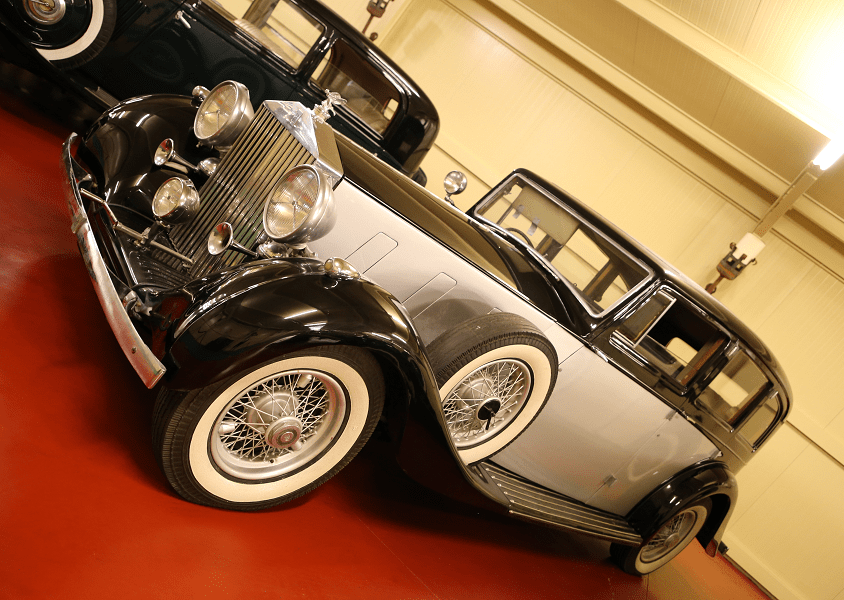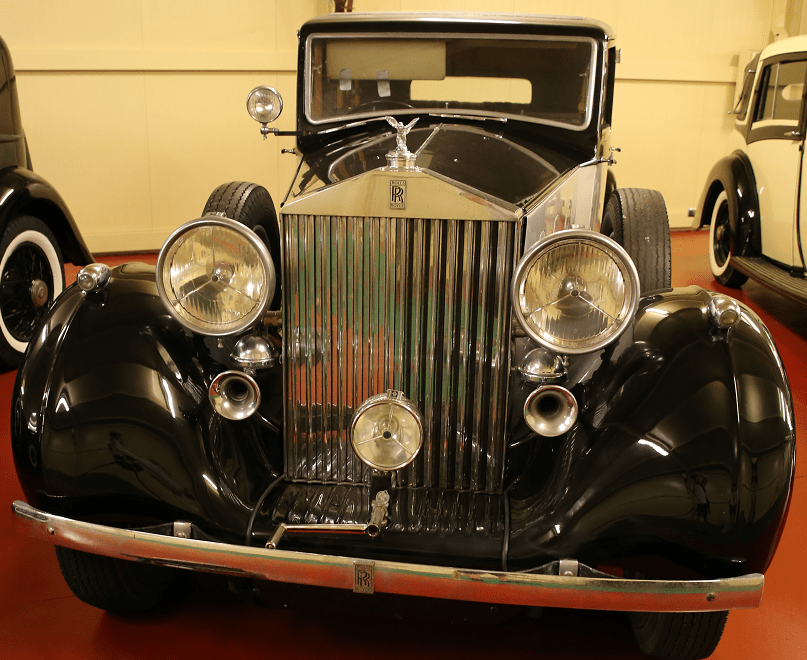Rolls-Royce Phantom III Limousine Sport Saloon by Freestone & Webb from 1936.
Freestone and Webb were English coachbuilders who made bodies for Rolls-Royce and Bentley motor cars but also built bodies on other chassis including Alfa Romeo, Packard, and Mercedes-Benz.
The Rolls-Royce Phantom III was the final large pre-war Rolls-Royce. Introduced in 1936, it replaced the Phantom II and it was the only V12 Rolls-Royce until the 1998 introduction of the Silver Seraph.
It is the first of the three V12-powered Rolls-Royce Phantoms, with the 2003-2017 Rolls-Royce Phantom VII and 2018- Rolls-Royce Phantom VIII being the other two.
727 V12 Phantom III chassis were constructed from 1936 to 1939, and approximately 650 have survived. Although chassis production ceased in 1939 (with one final chassis being built in 1940), cars were still being bodied and delivered in 1940 and 1941. The last car, though the rolling chassis was completed in 1941, was not delivered with a body to its owner until 1947. The Phantom III was the last car that Henry Royce worked on – he died, aged 70, a year into the Phantom III’s development.
The III is powered by an aluminium-alloy V12 engine of 447in³ (7.32L), having a bore of 3.25 inches (82.5 mm) and a stroke of 4.5 inches (114.3 mm). It is a pushrod engine with overhead valves operated by a single camshaft in the valley between the cylinder banks.
Early cars had hydraulic tappets or, rather, a unique system of eccentric bushings in each individual rocker that was actuated by a small hydraulic piston; the eccentric bushing ensuring zero valve-lash at the rocker/valve interface. This system was changed to solid adjustable tappets in 1938. The Phantom III is unusual for its twin ignition systems, with two distributors, two coils and 24 spark plugs. Petrol is provided by a twin SU electric pump. Wire wheels are fitted as standard, but many cars carry Ace wheel discs which were fitted to improve cosmetics and to reduce the time taken to clean the wire wheels after use.












